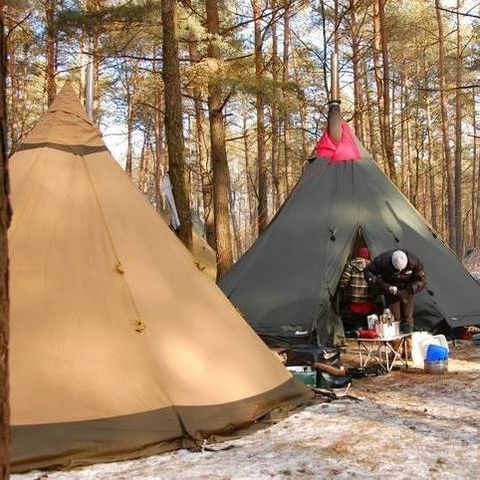


When you’re out in the wild, finding food becomes more than a skill—it’s now a means to survival. Sure, packing rations is smart, but what if they run out? Learning how to trap, snare, and forage for food gives you additional options for sustenance. More importantly, it gives you peace of mind about your situation. Before hunger hits, will you be ready to forage on your own? Let’s explore how to use survival traps and find food in the wilderness.
In the wild, survival traps are literally game-changers, as they catch the game that fuels you while you’re managing other tasks such as shelter-building or fire prep. The beauty of a trap is its simplicity. Set it, walk away, and return to (hopefully) a waiting meal.
This is one of the easiest traps to make, as it requires a few sticks and a heavy rock. Here’s how:
- Find three sticks: one straight (trigger stick), one angled (lever stick), and one base stick.
- Carve notches so the sticks lock together like a puzzle.
- Balance the rock on top of the trigger stick.
When an animal nudges the bait, the rock falls. This method is quick, silent, and effective. Use small bait, such as nuts, seeds, or berries, to lure small game such as squirrels or chipmunks.
Snares work well for catching rabbits or similar-sized animals. All you need is some strong cord or wire.
Check your trap often. A snared animal won’t wait forever, and a predator might beat you to it.
Success with traps often depends on where you set them up. Learn to spot animal tracks, droppings, or disturbed ground by looking near water sources, game trails, and dense vegetation. Early mornings and late afternoons are the best times to observe movement. Pay attention to these signs, and you’ll drastically increase your chances of catching a meal.
Traps are effective but will take time to yield results. Foraging bridges the gap between catches and provides quick energy sources while you wait. The trick is knowing what’s safe to eat and what to avoid.
Here are some beginner-friendly plants you can identify almost anywhere:
Not every green thing is safe. Avoid plants with milky sap, shiny leaves, or strong scents. When in doubt, use the “Universal Edibility Test.” Try a tiny amount on your skin first, then lips, and finally your mouth. If there’s no reaction, that means it’s safe to eat (but always double-check).
Trapping and foraging aren’t standalone skills—they’re complementary. Let’s say you set a snare in the morning. While waiting, use the time to scout for edible plants. This doubles your chances of getting fed.
Here’s an example plan for a survival day:
- Morning: Set up traps along animal trails.
- Midday: Forage for greens and berries nearby.
- Evening: Check traps and prepare your finds.
This balanced approach keeps you busy, focused, and fed.
While it’s tempting to eat whatever looks edible, don’t risk it. Some plants look harmless but are toxic, so always research the flora in your area before heading out. Similarly, avoid trapping large animals unless you’re skilled in handling them. Instead, stick to what you can manage.
Survival isn’t about perfection—it’s about persistence. Survival traps and foraging give you a fighting chance to survive another day. Mastering these basics means you’re never far from your next meal no matter where you are. Start today and carry the strength of self-reliance wherever the trail leads you.
- What’s the easiest trap for beginners?
The figure-four deadfall is a great choice. It’s simple, effective, and doesn’t require special tools. - How do I know if a plant is safe to eat?
Stick to well-known, easy-to-identify plants like dandelions, cattails, and clover. When in doubt, don’t eat it. - Can I forage during winter?
Yes, but options are limited. Look for evergreen plants, bark, and hardy roots. - How often should I check my traps?
Check them every 2–3 hours to ensure you don’t lose your catch to predators. - Do I need a license to trap animals?
It depends on your location. Check local laws before setting survival traps.
- Advertisement -
